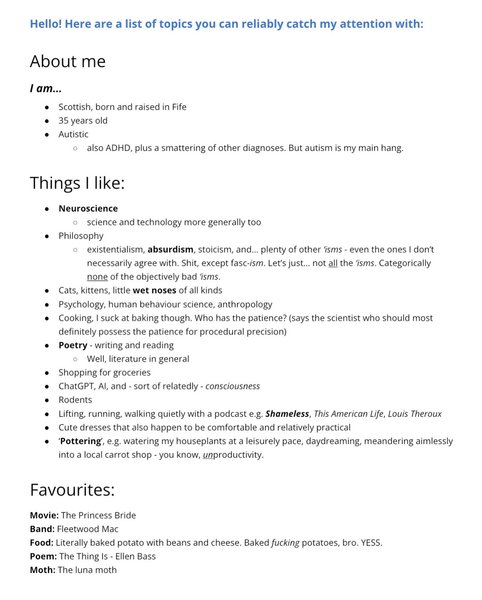Sublime
An inspiration engine for ideas
The text involved two sub-topics: measurement of intelligence, and structure of intelligence.
Fiona McPherson • Mnemonics for study (2nd ed.) (Study Skills)
Booklist - QQI Level 5 Childcare - Early Childhood Care and Education
The document provides a list of recommended books and equipment for the QQI Level 5 Childcare course, covering topics such as child development, early childhood education, and children with additional needs.
cpr.ieNihaala Beema Salam is a UX Researcher with a background in cognitive science, leveraging her natural curiosity and observational skills into a professional career. Her work is grounded in domain knowledge of cognitive psychology and neuroscience, which she applies through expertise in both qualitative and quantitative research methods. She has... See more
Bearing witness
college students applied the strategy to a 1,800-word passage about historical theories of human intelligence.
Fiona McPherson • Mnemonics for study (2nd ed.) (Study Skills)
Just updating my ‘please use this instead of horrendous video stills’ press picture. I recently got started on Threads and wrote a quick list of Rachel-related things to introduce myself, just thought I’d add that here too! 🧠🎀
instagram.comneurorights, can be defined as the ethical, legal, social, or natural principles of freedom or entitlement related to a person’s cerebral and mental domain; that is, the fundamental normative rules for the protection and preservation of the human brain and mind” [1]. Although the lists and terminologies sometimes diverge, four neurorights have been... See more
The Right to Mental Integrity: Multidimensional, Multilayered and Extended - Neuroethics
Sorry...
scholar.google.comIn understandable language, Richard J. Haier explains cutting-edge techniques based on genetics, DNA, and imaging of brain connectivity and function.


